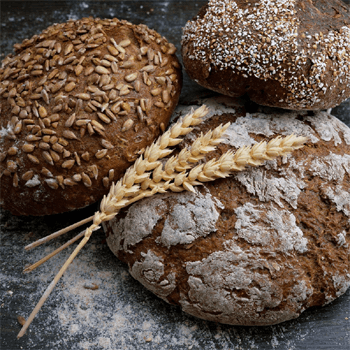Dining out with Celiac Disease.

In celiac disease, the immune system reacts to gluten and may cause short and long-term problems.
By Rebecca Toutant, MA, RD, LDN, CDE, cPT
May is Celiac Awareness Month. In celiac disease, the immune system reacts to gluten and the reaction may cause short and long-term problems. The treatment is to avoid all foods and products that are made with or have come in contact with wheat, rye, and barley.
Having food prepared is one of the simple pleasures in life. Eating out is a way to connect with other people and try new foods! But for a person with celiac disease* and other allergies, it can be stressful. Consider these tips to make eating out easier.
Before you go, call the restaurant...
- Connect during slow times. Restaurants tend to be busiest during peak hours (11 a.m. - 1 p.m. and 6 - 8 p.m.) without time to chat. Try not to call during these hours.
- Ask to speak with the head chef or manager. These folks know the most about food in the restaurant. However, they are busy, so allow a few hours for them to get back to you. Ask if they will be there when you are to simplify the experience.
- Explain your needs and ask if they can accommodate. If all of the food comes pre-made/pre-seasoned, it may not be possible to get your preferred dish gluten free. If they cannot accommodate you, ask if they would allow you to bring your own food so you can still eat with your friends or family.
- Ask how often staff are trained in food allergies. Staff often change in restaurants and new staff may not have allergy training. Ask to have someone with experience handling your food if possible.
- Ask if it’s possible for your food to be prepared in a separate area. Be mindful of what you order and whether or not it can be prepared in a separate area. For example, if you really want French Fries BUT they fry batter chicken using the same fryer, they cannot guarantee it will be gluten free. Similarly, if you order a gluten free pizza BUT it’s made in the same flour filled room as traditional pizza, it could become contaminated.
At the restaurant…
- Chat with the chef or manager. If you did not connect with the chef or manager prior to your visit, make sure to speak with them. Explain your situation and discuss options. If you are not comfortable doing this at the table, excuse yourself and ask the wait staff to connect you with the kitchen.
- Carry a chef card. If someone is not as familiar with celiac disease or are unavailable to talk, it is helpful to give them something in writing to refer to when checking ingredients. “Chef Cards” or “Restaurant Cards” are printable tools to give managers and chefs.
- Give praise. Restaurants want you to have a wonderful experience! Make sure to connect with the restaurant after or write a positive review.
Living with celiac disease changes how we navigate food, but don’t let it stop you from enjoying life. Speak with local support groups about restaurant options and keep a list handy! Remember every time you advocate for your needs, you’re helping a restaurant learn how help more people.
*Celiac Disease is an autoimmune disorder that affects 1 in 133 people in the United States. People with celiac disease get sick when they come in contact with gluten - a protein found in wheat, rye, and barley. The only treatment is complete avoidance of all food, cosmetics, and medications that have gluten.
Disclaimer
This articles provide general information for educational purposes only. The information provided in this article, or through linkages to other sites, is not a substitute for medical or professional care, and you should not use the information in place of a visit, call consultation or the advice of your physician or other healthcare provider.